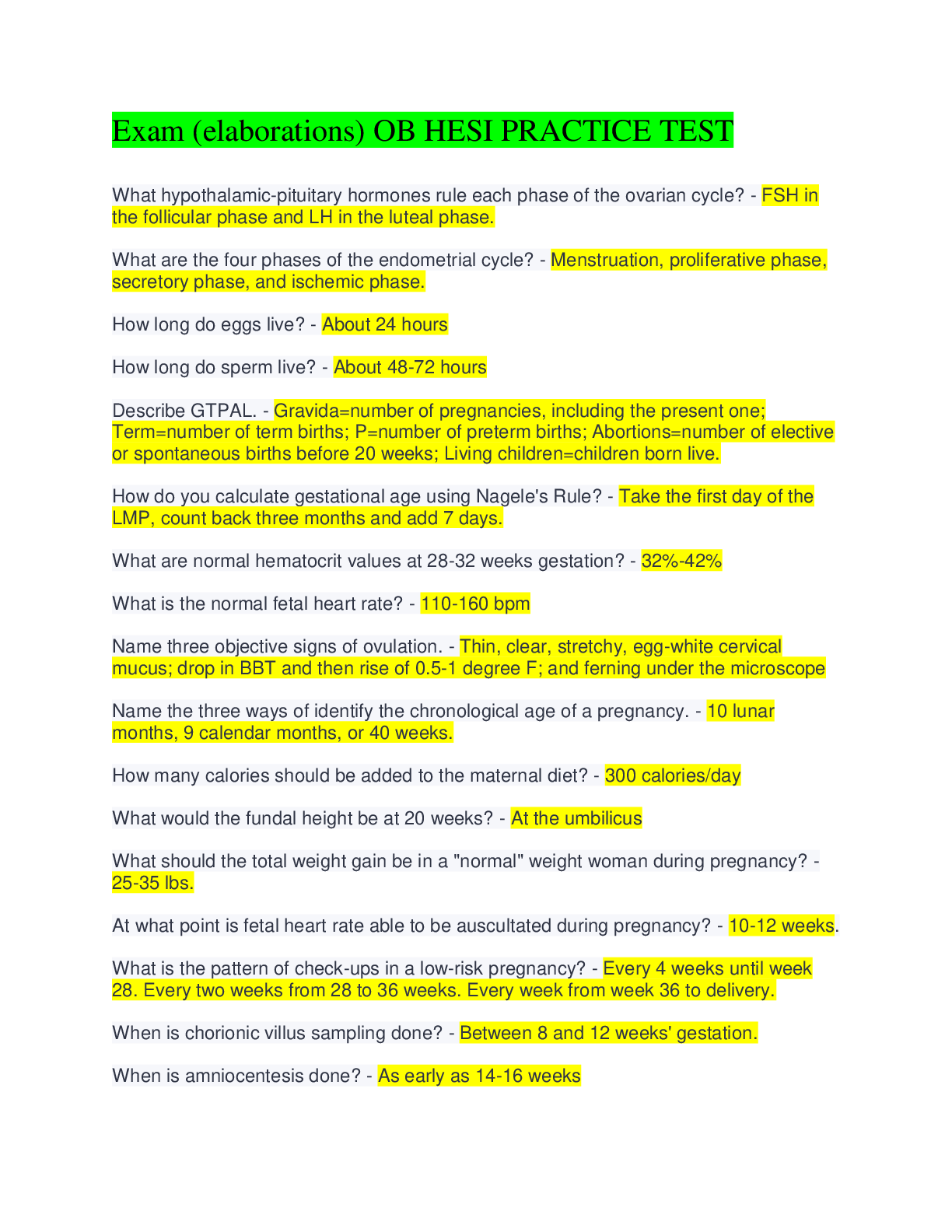NU 208 Pathophysiology Final Exam-Herzing University
Document Content and Description Below
1. A 52-year-old male enters a sleep study to gather information about hissleep disturbances. He reports that his wife will not let him sleep in the bed with her until he stops snoring so loudly. He ... also reports feeling tired a lot through the day. When the nurse checks the chart, what is the most likely diagnosis? • Insomnia - Not Selected • Correct answer: Obstructive sleep apnea syndrome (OSAS) • Somnambulism - Not Selected • Jet-lag syndrome - Not Selected General Feedback OSAS generally results from upper airway obstruction recurring during sleep with excessive snoring and multiple apneic episodes that last 10 seconds or longer. Insomnia is the inability to fall orstay asleep and may be mild, moderate, or severe. It does not involve snoring. Somnambulism is sleep-walking. Jet-lag syndrome is a disorder of waking and sleeping and does not involve snoring. 2. For legal purposes, brain death is defined as: • Correct answer: cessation of entire brain function. • lack of cortical function - Not Selected • a consistent vegetative state (VS) - Not Selected • death of the brainstem - Not Selected General Feedback Brain death occurs when there is cessation of function of the entire brain, including the brainstem and cerebellum. Lack of cortical function or brainstem death is not enough to define brain death. A VS is complete unawareness of the self orsurrounding environment and complete loss of cognitive function. 3. An infant is diagnosed with congenital hydrocephalus. Whch of the following characteristics would the nurse expect to find? • Correct answer: Enlarged ventricles • Decreased cerebrospinal fluid (CSF) production - Not Selected • Increased resorption of CSF - Not Selected • Smaller than average head circumference - Not Selected General Feedback Congenital hydrocephalus is characterized by enlargement of the cerebral ventricles. Increased, not decreased, CSF production would lead to hydrocephalus. Decreased resorption of CSF would lead to hydrocephalus, not increased CSF. An infant with congenital hydrocephalus would have increased head circumference. 4. An 11-year-old is newly diagnosed with type 1 DM. Whch classic symptoms should the nurse assess the patient for? • Recurrent infections, visual changes, fatigue, and paresthesia - Not Selected • Correct answer: Polydipsia, polyuria, polyphagia, and weight loss • Vomiting, abdominal pain,sweet, fruity breath, dehydration, and Kussmaul breathing - Not Selected • Weakness, vomiting, hypotension, and mental confusion - Not Selected.........................................................continued [Show More]
Last updated: 2 years ago
Preview 1 out of 43 pages

Buy this document to get the full access instantly
Instant Download Access after purchase
Buy NowInstant download
We Accept:

Reviews( 0 )
$16.00
Can't find what you want? Try our AI powered Search
Document information
Connected school, study & course
About the document
Uploaded On
Aug 31, 2021
Number of pages
43
Written in
Additional information
This document has been written for:
Uploaded
Aug 31, 2021
Downloads
0
Views
52














